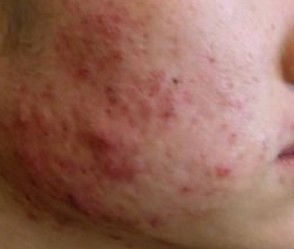Can anything be done about scarring caused by acne? | |||
 1,246 1,246  0 0  0 0 | |||
| Acne scarring can be a frustrating and persistent reminder of past breakouts. While completely eliminating scars is often difficult, numerous treatments are available to significantly improve their appearance. The optimal approach depends on the type and severity of the scarring, individual skin characteristics, and treatment goals.
Minimally Invasive TreatmentsThese options are generally considered less aggressive and require less downtime.
Topical TreatmentsSeveral topical agents can help improve the texture and appearance of mild acne scars.
MicrodermabrasionThis procedure involves using a device with tiny crystals or a diamond-tipped wand to exfoliate the outermost layer of skin. Microdermabrasion can improve skin texture and reduce the appearance of shallow scars.
MicroneedlingMicroneedling uses a device with fine, short needles to create micro-injuries in the skin. These micro-injuries stimulate the body's natural healing process, leading to increased collagen and elastin production. Microneedling can be used alone or in combination with other treatments, such as platelet-rich plasma (PRP).
More Invasive TreatmentsThese procedures are typically more effective for moderate to severe scarring but may also carry a higher risk of side effects and require longer recovery times.
Chemical Peels (Deep)Stronger chemical peels, performed by a dermatologist, penetrate deeper into the skin to provide more significant improvements in moderate to severe scarring. Examples include higher concentrations of TCA peels.
Laser TreatmentsVarious laser technologies are used to improve acne scarring:
SubcisionThis procedure involves inserting a needle under the scar to break up the fibrous bands that tether the scar to the underlying tissue. By releasing this tethering, the skin is allowed to rise, resulting in a smoother surface.
Dermal FillersDermal fillers, such as hyaluronic acid, can be injected into depressed scars to raise them to the level of the surrounding skin. This provides a temporary improvement in appearance, typically lasting several months to a year. Repeat injections are required to maintain the results.
Surgical ExcisionIn severe cases, surgical excision may be considered to remove the scar tissue. This can be performed through punch excision (removing a small circular section of skin) or by directly excising the scar and stitching the surrounding skin together.
Important ConsiderationsBefore pursuing any acne scar treatment, it's essential to consider the following factors:
Type of ScarringDifferent types of acne scars respond differently to various treatments. Common types of scars include:
Skin Type and ToneIndividuals with darker skin tones are at a higher risk of developing hyperpigmentation (darkening) or hypopigmentation (lightening) after certain treatments, particularly laser procedures and deep chemical peels. Treatment options should be tailored to the individual's skin type to minimize these risks.
Realistic ExpectationsIt's crucial to have realistic expectations regarding the outcome of acne scar treatments. While significant improvements are often possible, complete elimination of scars is rarely achievable.
Consultation with a DermatologistConsulting a dermatologist or qualified medical professional is essential for a proper diagnosis and personalized treatment plan. They can assess the type and severity of your scarring, evaluate your skin type, and recommend the most appropriate treatment options to minimize your acne scarring. It's best to avoid online advice or home remedies, as these may not be effective and could potentially worsen the problem. Tags: Abundance Acne Medication Dermabrasion Laser Abrasion Medication Microdermabrasion Microneedling Retinoids | |||
| |||
| | |||
|
 3224
3224 